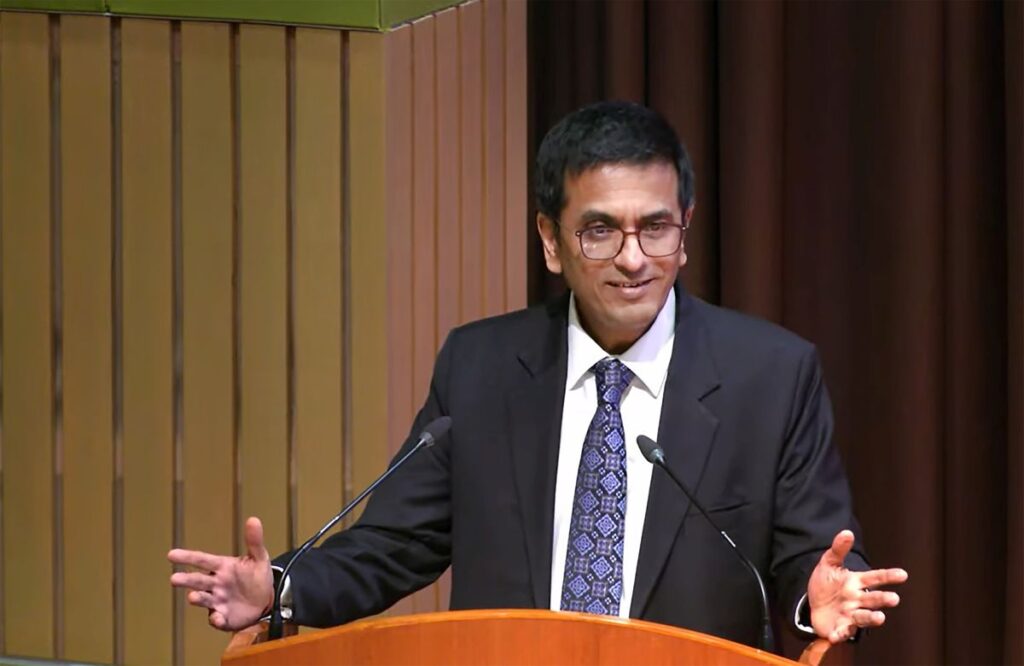Jahanvi Agarwal
In an intriguing legal discourse, Chief Justice of India, D Y Chandrachud, offered a crucial perspective: once judges step down from the bench, their views transform into opinions rather than binding legal doctrine. This insightful observation follows former Chief Justice of India, Ranjan Gogoi’s, nominated membership in the Rajya Sabha, where he opined that the basic structure of the Constitution harbors a debatable jurisprudential basis.
During a pertinent discussion on the validity of the decision to dilute Article 370 of the Constitution, senior Advocate Kapil Sibal presented this matter before a five-judge Constitution bench led by CJI Chandrachud. While representing National Conference leader Mohammad Akbar Lone, one of the petitioners challenging the abrogation of Article 370, Sibal alluded to the ambiguity surrounding the basic structure theory, citing Gogoi’s statement.
In response, CJI Chandrachud elegantly underscored that when referencing a colleague, it’s pertinent to refer to a current sitting colleague. He conveyed a fundamental principle that after retiring from the judiciary, a judge’s views no longer bear the weight of legal authority but rather serve as informed opinions.
This nuanced exchange brought forth the concept of freedom of speech and expression, with the Solicitor General, Tushar Mehta, for the Centre, emphasizing that parliamentary discussions do not delve into the intricacies of courtroom proceedings.
Sibal concurred, marking the importance of this discourse, especially in the context of the basic structure doctrine. Gogoi’s stance, voiced in support of the Government of National Capital Territory of Delhi (Amendment) Bill, 2023, questioned the foundational basis of this legal doctrine, pivotal in safeguarding the Constitution’s core tenets. The basic structure doctrine delineates essential constitutional features that Parliament cannot modify, as established by the Supreme Court’s Constitution bench in the Kesavananda Bharti Case (1973).
In essence, this legal discourse highlights the evolving landscape of legal doctrine and the intriguing interplay between sitting and retired judges’ perspectives.


